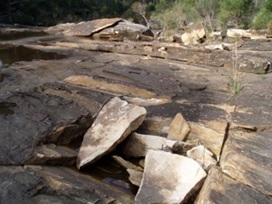 Note that the Chief Scientists report published in May 2014 On Measuring the Cumulative Impacts of Activities which Impact Ground and Surface Water in the Sydney Water Catchment pointed out that Sydney is the only city with longwall mining operating in publicly owned drinking water catchments.
Note that the Chief Scientists report published in May 2014 On Measuring the Cumulative Impacts of Activities which Impact Ground and Surface Water in the Sydney Water Catchment pointed out that Sydney is the only city with longwall mining operating in publicly owned drinking water catchments.
Finally some good news.
Wollongong Coal applied to develop eight new longwalls that would yield 4.5 million tonnes of coal each year for five years. The NSW Planning Assessment Commission (PAC) held a public inquiry in February.
Wollongong Coal has failed to convince PAC that it can expand the Russell Vale Colliery without causing 'substantial and irreversible' damage to Sydney’s drinking water supply.
The Commission has advised the NSW Planning Department that more robust analysis of the risks is required to enable the Commission to make a recommendation on whether the project should be approved. The report also acknowledged the impact mining operations would have on local residents.
The commissioners' report found that:
… in relation to the potential impacts of water resources, the advice the Commission has received from … independent experts is consistently critical of the residual uncertainties and risks relating to current plans.
The precautionary principle has been applied:
The Commission considers the likelihood of the proposed mine causing a significant detrimental impact on the Sydney water catchment quality or quantity is low, however the consequence, if such an event did occur, could be substantial and irreversible. The precautionary principle requires the Commission to have regard to likelihood and consequence of these risks for each proposal.
Wollongong Coal’s response so far is to carry on regardless in organising a refinancing package. They issued this statement:
The PAC have raised some recommendations for review, [and] we've submitted a response to the Department of Planning, and a strategy of how we can meet those recommendations.
We will have to wait and see if the PAC report is a turning point for protection of our water catchment.
